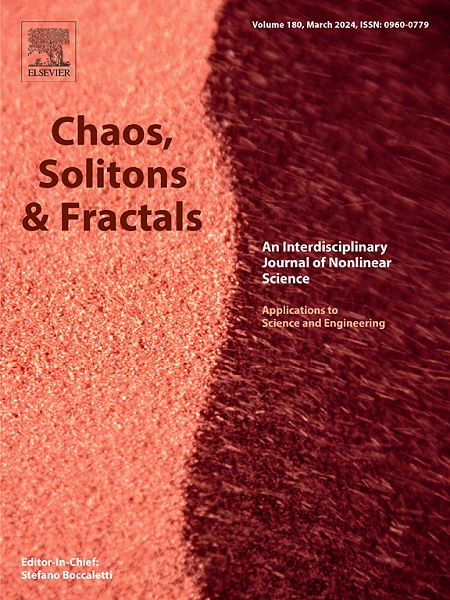Predator–prey dynamics in autonomous and nonautonomous settings: Impacts of anti-predator behavior, refuge, and additional food
IF 5.3
1区 数学
Q1 MATHEMATICS, INTERDISCIPLINARY APPLICATIONS
引用次数: 0
Abstract
Predator–prey interactions, shaped by anti-predator behaviors, refuge use, and resource availability, drive ecological dynamics and species evolution. This study presents autonomous and nonautonomous models to examine the effects of prey defense mechanisms and external food sources for predator populations. The autonomous model focuses on constant scenarios, while the nonautonomous model accounts for seasonal variations. Numerical results reveal the intricate roles of prey anti-predator behavior, refuge capacity, and external food sources in driving population dynamics. We identify parameter thresholds critical to the survival of middle predators, uncovering novel bistability phenomenon and multistability scenarios characterized by oscillatory coexistence and predator-free steady states. Saddle–node and homoclinic bifurcations illustrate the sensitivity of the system to minor changes in the parameter values, highlighting regime shifts between predator-dominated and predator-free states. Additionally, we observe “bubbling” phenomenon linked to reduced prey consumption rates by middle predators, further elucidating the system’s complexity. Seasonal perturbations of the parameters yield diverse behaviors, including periodic oscillation, bursting, and chaotic dynamics. Notably, chaotic dynamics emerge when refuge coefficients are varied, which is confirmed by a positive Lyapunov exponent. These findings emphasize the destabilizing impact of seasonal forcing, which can lead to the decline of middle predator population. Our results provide critical insights into the stability and resilience of food web interactions, offering valuable guidance for conservation strategies and ecosystem management under fluctuating environmental conditions.
自主和非自主环境中捕食者与猎物的动态关系:反捕食者行为、避难所和额外食物的影响
本文章由计算机程序翻译,如有差异,请以英文原文为准。
求助全文
约1分钟内获得全文
求助全文
来源期刊

Chaos Solitons & Fractals
物理-数学跨学科应用
CiteScore
13.20
自引率
10.30%
发文量
1087
审稿时长
9 months
期刊介绍:
Chaos, Solitons & Fractals strives to establish itself as a premier journal in the interdisciplinary realm of Nonlinear Science, Non-equilibrium, and Complex Phenomena. It welcomes submissions covering a broad spectrum of topics within this field, including dynamics, non-equilibrium processes in physics, chemistry, and geophysics, complex matter and networks, mathematical models, computational biology, applications to quantum and mesoscopic phenomena, fluctuations and random processes, self-organization, and social phenomena.
 求助内容:
求助内容: 应助结果提醒方式:
应助结果提醒方式:


